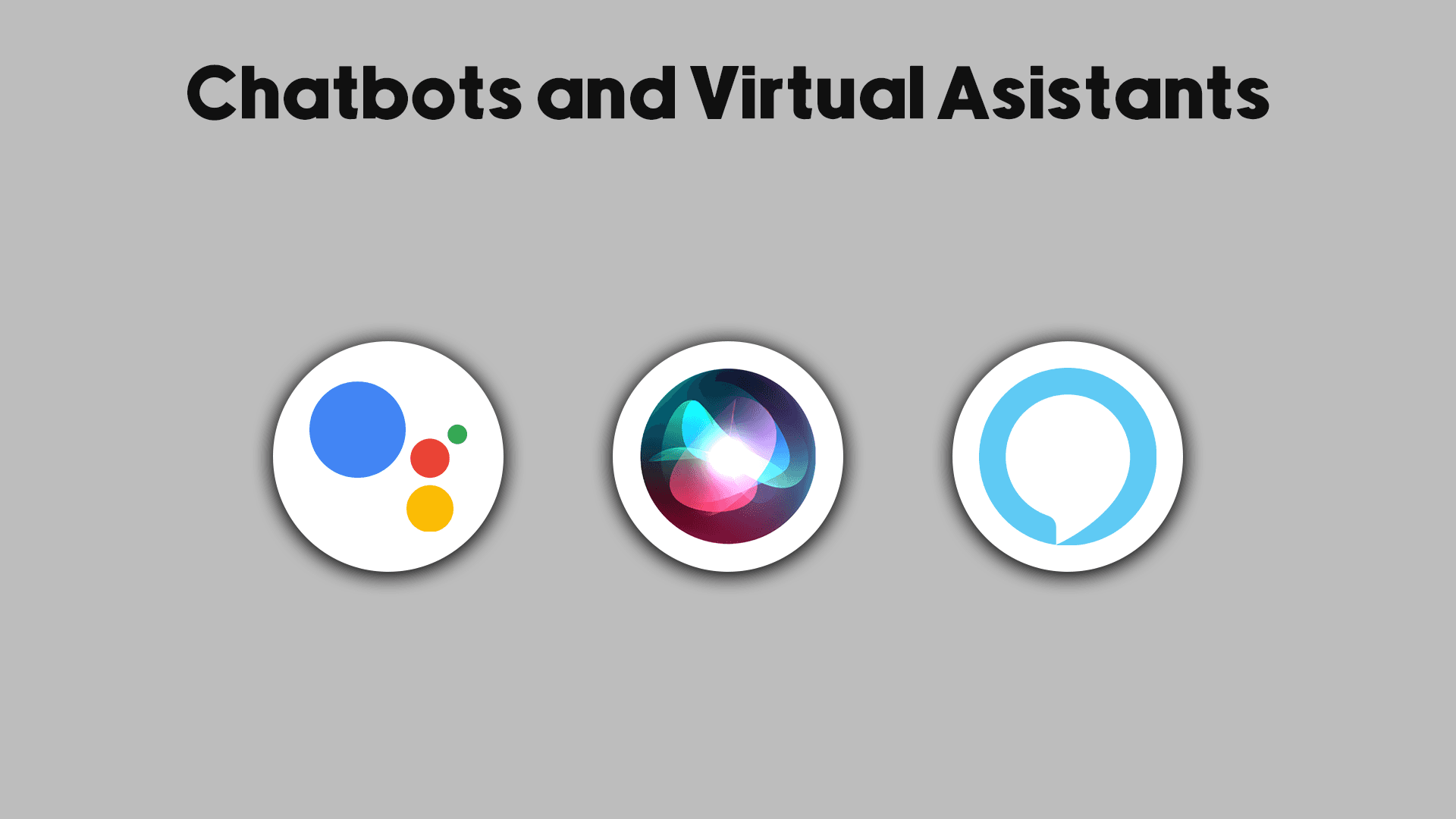Jul 24, 2023
Marketing Strategies for Micro-SaaS Success

You've got an innovative SaaS product ready to dazzle your target audience, but now you're faced with the million-dollar question: "How do I effectively market my micro-SaaS business?" Afterall marketing is the lifeblood that will propel your business to success!
In this blog post, we'll delve into the secrets of successful marketing strategies tailored specifically for micro-SaaS businesses. We'll explore the power of targeted outreach, optimizing your online presence, and leveraging customer engagement to foster growth.
Let's discover what turns curious prospects into passionate customers so you know the blueprint of marketing success in the micro-saas vertical.
Attracting Target Customers
If you have a viable SaaS company there ought to be people taking an interest in it. Attracting the right customers is crucial for the growth of any micro-SaaS business. This group of early adopters set the tone for a business' success.
1. Utilizing Search Engine Optimization (SEO)

Image Source: Click Here
Optimize your micro-SaaS website for search engines by conducting thorough keyword research. Identify relevant, high-volume keywords related to your industry and incorporate them naturally into your website's content, meta tags, URLs, and image alt tags. Ensure your website's technical aspects, such as site speed, mobile responsiveness, and URL structure, are optimized for a seamless user experience.
In addition to on-page optimization, focus on building quality backlinks from reputable websites. Engage in guest blogging, participate in online discussions, and contribute to industry forums to establish your brand's authority and improve search engine visibility. By implementing effective SEO strategies, you can drive organic traffic and attract potential customers who are actively searching for solutions in your niche.
2. Harnessing the Power of Social Media

Social media platforms offer excellent opportunities to engage with your target audience and showcase your micro-SaaS business. Create a strong social media presence by consistently sharing valuable content that resonates with your audience. Utilize eye-catching visuals, such as infographics, images, and videos, to enhance engagement and make your content shareable.
Identify the social media platforms where your target audience is most active and tailor your content and engagement strategies accordingly. For example, if your audience consists of professionals and businesses, focus on LinkedIn. Encourage user-generated content by running contests or campaigns that involve your audience. Collaborate with micro-influencers who have a strong presence on specific social media platforms to expand your brand's reach and tap into their engaged following.
Scaling Marketing Efforts for Long-Term Growth
Once you have established a strong foundation for your micro-SaaS business with effective marketing strategies, it's important to focus on scaling your efforts for long-term growth. Here are some additional strategies to consider:
1. Continuous Data Analysis and Optimization

Data analysis plays a crucial role in refining your marketing approach. Regularly analyze key performance indicators (KPIs) such as website traffic, conversion rates, customer acquisition cost, and customer lifetime value. Identify patterns and insights that can guide your marketing decisions.
Utilize tools like Google Analytics and marketing automation platforms to track user behavior, campaign performance, and customer interactions. Use A/B testing to experiment with different marketing messages, landing page designs, and calls to action to optimize conversion rates. By constantly monitoring and optimizing your marketing efforts based on data-driven insights, you can improve ROI and drive sustainable growth.
2. Personalization and Customer Segmentation

Image Source: Click Here
Tailoring your marketing messages and experiences to specific customer segments can greatly enhance engagement and conversion rates. Implement customer segmentation based on factors such as industry, company size, geographical location, and behavior patterns.
Use personalized email marketing campaigns to deliver targeted content and offers that address the unique needs and pain points of each segment. Leverage marketing automation tools to automate and streamline your communication processes while maintaining a personalized approach. By providing relevant and timely information to your audience, you can nurture leads and drive customer loyalty.
3. Strategic Partnerships and Collaborations

Partnering with other businesses in the micro-SaaS industry can help expand your reach and tap into new markets. Look for opportunities to collaborate with complementary micro-SaaS businesses that share a similar target audience but offer different products or services.
Explore co-marketing initiatives where you can create joint content, webinars, or events that provide value to both your audiences. By leveraging each other's networks and expertise, you can reach a wider audience and gain credibility through association with trusted partners.
4. Customer Success and Advocacy Programs

Image Source: Click Here
Investing in customer success is vital for long-term growth. Implement customer success programs that focus on helping your customers achieve their desired outcomes with your micro-SaaS product. Provide proactive support, regular check-ins, and educational resources to ensure customers fully utilize and benefit from your offering.
Encourage customer advocacy by rewarding and recognizing loyal customers who refer new business to you. Develop customer advocacy programs that incentivize customers to share their positive experiences through testimonials, case studies, and online reviews. A strong base of satisfied and loyal customers can become powerful advocates for your micro-SaaS business, driving organic growth through word-of-mouth referrals.
By incorporating these strategies and consistently iterating on your marketing efforts, your micro-SaaS business can achieve sustainable growth, expand its customer base, and solidify its position in the market.
Driving User Acquisition and Retention
Acquiring and retaining users is essential for the success of your micro-SaaS business. Implement these strategies:
1. Offering Freemium and Trial Options

Image Source: Click Here
Provide freemium or trial versions of your micro-SaaS product to allow potential customers to experience its value. Design targeted nurturing campaigns to guide free users towards upgrading to a paid version. Emphasize the unique features and benefits of your premium offering, showcasing how it addresses their pain points and provides a comprehensive solution. Optimize the user onboarding process to ensure a seamless experience and increase conversions.
Collect feedback from free users and actively listen to their needs and challenges. Use this valuable information to refine your product and continuously improve the user experience. By offering freemium and trial options and effectively nurturing free users, you can convert them into paying customers and drive user acquisition.
2. Implementing Referral Programs

Word-of-mouth marketing can have a significant impact on user acquisition. Develop referral programs that incentivize your existing customers to refer others to your micro-SaaS product. Offer rewards such as discounts, exclusive access to features, or even monetary incentives for successful referrals. Encourage customers to share their positive experiences with your product and recommend it to others.
Collaborate with industry influencers or complementary micro-SaaS businesses through affiliate partnerships. By leveraging their networks and combining efforts, you can expand your reach and tap into new customer segments. Implement customer loyalty programs to reward advocacy and encourage ongoing engagement, fostering a sense of community and building strong relationships with your customers.
Tips and Strategies
1. Content Diversification

To keep your marketing efforts fresh and engaging, consider diversifying your content formats. While written blog posts are valuable, incorporating other content types can attract different segments of your target audience and enhance engagement.
Consider creating video tutorials or product demos to showcase the functionality and benefits of your micro-SaaS product. Video content is highly engaging and can be shared across various platforms, including your website, social media channels, and video-sharing platforms like YouTube.
Additionally, explore the potential of hosting webinars or live events where you can provide in-depth knowledge, answer questions, and interact with your audience in real-time. Webinars and live events allow you to position your micro-SaaS business as an industry thought leader and engage with potential customers on a deeper level.
2. Thought Leadership and Industry Engagement

Establishing yourself and your micro-SaaS business as thought leaders within the industry can significantly impact brand awareness and customer perception. Seek opportunities to contribute valuable insights and expertise through speaking engagements, industry conferences, and panel discussions.
Publish thought-provoking articles and research reports on industry publications and blogs. Share your expertise on relevant forums, LinkedIn groups, and social media platforms where industry professionals and potential customers gather. By consistently demonstrating your knowledge and staying up-to-date with industry trends, you can attract a loyal following and gain credibility as a trusted authority.
3. Continuous Learning and Adaptation

The digital landscape and the micro-SaaS market are constantly evolving. To stay ahead of the curve, embrace a culture of continuous learning and adaptation. Stay updated on industry news, emerging technologies, and customer preferences.
Invest in professional development for your marketing team, attend relevant workshops, and leverage online courses to enhance your skills and knowledge. Encourage a culture of experimentation and innovation within your organization. Test new marketing channels, strategies, and technologies to identify what works best for your micro-SaaS business.
By continuously learning and adapting your marketing approach, you can remain agile and responsive to changing market dynamics, ensuring long-term success and growth.
4. Customer Feedback and User Experience Optimization

Listening to your customers is crucial for improving your micro-SaaS product and optimizing the user experience. Implement feedback mechanisms such as surveys, customer interviews, and user testing to gather valuable insights from your customer base.
Actively analyze the feedback received to identify pain points, areas of improvement, and opportunities to enhance the user experience. Use this feedback to iterate on your product, address any issues, and prioritize feature enhancements that align with customer needs.
Invest in user experience (UX) optimization by conducting usability tests and improving the overall interface and functionality of your micro-SaaS product. A seamless and intuitive user experience not only increases customer satisfaction but also encourages positive word-of-mouth referrals and repeat business.
5. Community Building and Customer Engagement

Image Source: Click Here
Building a community around your micro-SaaS brand can foster deeper customer connections and drive engagement. Create a space for customers to interact, share insights, and provide support to one another.
Establish an online community forum, host webinars or workshops exclusively for customers, and encourage active participation through discussions and knowledge sharing. By fostering a sense of belonging and providing value-added resources, you can strengthen customer loyalty and advocacy.
Implement customer success initiatives that go beyond onboarding. Provide ongoing training, educational resources, and proactive support to ensure customers are maximizing the value of your micro-SaaS product. Regularly communicate updates, new features, and industry insights to keep customers engaged and informed.
6. Localization and Global Expansion
If your micro-SaaS business has the potential for international growth, consider localizing your marketing efforts and product offerings. Adapt your content, messaging, and user interface to cater to different regions and cultures.
Conduct market research to understand the needs and preferences of target markets in different countries. Translate your website, documentation, and marketing materials into local languages to reach a wider audience.
Develop partnerships with local resellers or distributors who have knowledge of regional markets and can help you navigate cultural nuances and regulatory requirements. By expanding globally, you can tap into new customer bases and unlock additional growth opportunities.
7. Data Security and Privacy Compliance

In today's digital landscape, data security and privacy are paramount concerns for customers. Assure your customers that their data is secure and comply with relevant privacy regulations, such as the General Data Protection Regulation (GDPR) or the California Consumer Privacy Act (CCPA).
Communicate your data protection measures clearly to build trust with customers. Implement secure data storage practices, encryption protocols, and regular vulnerability assessments. Educate your customers about your commitment to data security and privacy through transparent privacy policies and compliance documentation.
By prioritizing data security and privacy, you can instill confidence in your customers and differentiate your micro-SaaS business as a trusted and reliable solution provider.
Remember that every micro-SaaS business is unique, and it's crucial to tailor these strategies to align with your specific goals, target audience, and market dynamics. Continuously monitor the performance of your marketing initiatives, adapt to industry trends, and stay connected with your customers' evolving needs.
Harnessing the Power of AI and Automation in Micro-SaaS Marketing

In the era of digital transformation, leveraging artificial intelligence (AI) and automation can provide a competitive advantage for micro-SaaS businesses. Let's explore how you can harness the power of AI and automation in your marketing efforts:
1. Intelligent Customer Segmentation

Image Source: Click Here
AI can help you segment your customer base more intelligently by analyzing vast amounts of data and identifying patterns and trends. By understanding customer behavior, preferences, and needs, you can create highly targeted marketing campaigns tailored to specific segments.
Implement AI-powered customer segmentation tools that automatically analyze data from various touchpoints, such as website interactions, purchase history, and support inquiries. This allows you to personalize your marketing messages and deliver relevant content at the right time, increasing engagement and conversion rates.
2. Chatbots and Virtual Assistants

Chatbots and virtual assistants powered by AI can streamline customer support and enhance the overall user experience. These intelligent bots can handle common inquiries, provide instant responses, and guide users through the onboarding process or troubleshooting steps.
Implement chatbots on your website or within your micro-SaaS application to provide real-time assistance to users. Use natural language processing (NLP) algorithms to ensure accurate understanding and meaningful interactions. By incorporating chatbots, you can reduce support response times, improve customer satisfaction, and free up your team's resources for more complex tasks.
3. Predictive Analytics

AI-driven predictive analytics can help you anticipate customer behavior, identify potential churn risks, and optimize marketing campaigns. By analyzing historical data and identifying patterns, AI algorithms can generate predictions and recommendations for future actions.
Leverage predictive analytics to identify high-value leads, personalize offers based on individual customer preferences, and optimize pricing strategies. By leveraging data-driven insights, you can make informed decisions that drive revenue growth and customer retention.
4. Dynamic Content Generation

Image Source: Click Here
AI can assist in automating content generation, making it more efficient and scalable. Natural language generation (NLG) algorithms can create personalized email campaigns, blog posts, or social media content based on customer data and predefined templates.
By automating content generation, you can save time and resources while still delivering personalized and relevant content to your audience. This allows you to engage with customers on a larger scale and maintain consistency in your messaging.
5. Ad Optimization and Targeting

AI-powered algorithms can optimize your ad campaigns by analyzing user behavior, demographics, and engagement metrics. This allows you to target your ads more effectively and allocate your budget where it has the most impact.
Implement AI-driven ad platforms that continuously optimize your campaigns, adjusting bidding strategies, targeting parameters, and ad creatives based on real-time performance data. This ensures that your ads reach the right audience, maximize conversions, and improve ROI.
Conclusion
Incorporating AI and automation in your micro-SaaS marketing efforts can streamline processes, enhance personalization, and drive efficiency. As AI technology continues to advance, explore opportunities to integrate AI-powered tools and platforms that align with your business goals and marketing objectives.
Jul 24, 2023
Marketing Strategies for Micro-SaaS Success

You've got an innovative SaaS product ready to dazzle your target audience, but now you're faced with the million-dollar question: "How do I effectively market my micro-SaaS business?" Afterall marketing is the lifeblood that will propel your business to success!
In this blog post, we'll delve into the secrets of successful marketing strategies tailored specifically for micro-SaaS businesses. We'll explore the power of targeted outreach, optimizing your online presence, and leveraging customer engagement to foster growth.
Let's discover what turns curious prospects into passionate customers so you know the blueprint of marketing success in the micro-saas vertical.
Attracting Target Customers
If you have a viable SaaS company there ought to be people taking an interest in it. Attracting the right customers is crucial for the growth of any micro-SaaS business. This group of early adopters set the tone for a business' success.
1. Utilizing Search Engine Optimization (SEO)

Image Source: Click Here
Optimize your micro-SaaS website for search engines by conducting thorough keyword research. Identify relevant, high-volume keywords related to your industry and incorporate them naturally into your website's content, meta tags, URLs, and image alt tags. Ensure your website's technical aspects, such as site speed, mobile responsiveness, and URL structure, are optimized for a seamless user experience.
In addition to on-page optimization, focus on building quality backlinks from reputable websites. Engage in guest blogging, participate in online discussions, and contribute to industry forums to establish your brand's authority and improve search engine visibility. By implementing effective SEO strategies, you can drive organic traffic and attract potential customers who are actively searching for solutions in your niche.
2. Harnessing the Power of Social Media

Social media platforms offer excellent opportunities to engage with your target audience and showcase your micro-SaaS business. Create a strong social media presence by consistently sharing valuable content that resonates with your audience. Utilize eye-catching visuals, such as infographics, images, and videos, to enhance engagement and make your content shareable.
Identify the social media platforms where your target audience is most active and tailor your content and engagement strategies accordingly. For example, if your audience consists of professionals and businesses, focus on LinkedIn. Encourage user-generated content by running contests or campaigns that involve your audience. Collaborate with micro-influencers who have a strong presence on specific social media platforms to expand your brand's reach and tap into their engaged following.
Scaling Marketing Efforts for Long-Term Growth
Once you have established a strong foundation for your micro-SaaS business with effective marketing strategies, it's important to focus on scaling your efforts for long-term growth. Here are some additional strategies to consider:
1. Continuous Data Analysis and Optimization

Data analysis plays a crucial role in refining your marketing approach. Regularly analyze key performance indicators (KPIs) such as website traffic, conversion rates, customer acquisition cost, and customer lifetime value. Identify patterns and insights that can guide your marketing decisions.
Utilize tools like Google Analytics and marketing automation platforms to track user behavior, campaign performance, and customer interactions. Use A/B testing to experiment with different marketing messages, landing page designs, and calls to action to optimize conversion rates. By constantly monitoring and optimizing your marketing efforts based on data-driven insights, you can improve ROI and drive sustainable growth.
2. Personalization and Customer Segmentation

Image Source: Click Here
Tailoring your marketing messages and experiences to specific customer segments can greatly enhance engagement and conversion rates. Implement customer segmentation based on factors such as industry, company size, geographical location, and behavior patterns.
Use personalized email marketing campaigns to deliver targeted content and offers that address the unique needs and pain points of each segment. Leverage marketing automation tools to automate and streamline your communication processes while maintaining a personalized approach. By providing relevant and timely information to your audience, you can nurture leads and drive customer loyalty.
3. Strategic Partnerships and Collaborations

Partnering with other businesses in the micro-SaaS industry can help expand your reach and tap into new markets. Look for opportunities to collaborate with complementary micro-SaaS businesses that share a similar target audience but offer different products or services.
Explore co-marketing initiatives where you can create joint content, webinars, or events that provide value to both your audiences. By leveraging each other's networks and expertise, you can reach a wider audience and gain credibility through association with trusted partners.
4. Customer Success and Advocacy Programs

Image Source: Click Here
Investing in customer success is vital for long-term growth. Implement customer success programs that focus on helping your customers achieve their desired outcomes with your micro-SaaS product. Provide proactive support, regular check-ins, and educational resources to ensure customers fully utilize and benefit from your offering.
Encourage customer advocacy by rewarding and recognizing loyal customers who refer new business to you. Develop customer advocacy programs that incentivize customers to share their positive experiences through testimonials, case studies, and online reviews. A strong base of satisfied and loyal customers can become powerful advocates for your micro-SaaS business, driving organic growth through word-of-mouth referrals.
By incorporating these strategies and consistently iterating on your marketing efforts, your micro-SaaS business can achieve sustainable growth, expand its customer base, and solidify its position in the market.
Driving User Acquisition and Retention
Acquiring and retaining users is essential for the success of your micro-SaaS business. Implement these strategies:
1. Offering Freemium and Trial Options

Image Source: Click Here
Provide freemium or trial versions of your micro-SaaS product to allow potential customers to experience its value. Design targeted nurturing campaigns to guide free users towards upgrading to a paid version. Emphasize the unique features and benefits of your premium offering, showcasing how it addresses their pain points and provides a comprehensive solution. Optimize the user onboarding process to ensure a seamless experience and increase conversions.
Collect feedback from free users and actively listen to their needs and challenges. Use this valuable information to refine your product and continuously improve the user experience. By offering freemium and trial options and effectively nurturing free users, you can convert them into paying customers and drive user acquisition.
2. Implementing Referral Programs

Word-of-mouth marketing can have a significant impact on user acquisition. Develop referral programs that incentivize your existing customers to refer others to your micro-SaaS product. Offer rewards such as discounts, exclusive access to features, or even monetary incentives for successful referrals. Encourage customers to share their positive experiences with your product and recommend it to others.
Collaborate with industry influencers or complementary micro-SaaS businesses through affiliate partnerships. By leveraging their networks and combining efforts, you can expand your reach and tap into new customer segments. Implement customer loyalty programs to reward advocacy and encourage ongoing engagement, fostering a sense of community and building strong relationships with your customers.
Tips and Strategies
1. Content Diversification

To keep your marketing efforts fresh and engaging, consider diversifying your content formats. While written blog posts are valuable, incorporating other content types can attract different segments of your target audience and enhance engagement.
Consider creating video tutorials or product demos to showcase the functionality and benefits of your micro-SaaS product. Video content is highly engaging and can be shared across various platforms, including your website, social media channels, and video-sharing platforms like YouTube.
Additionally, explore the potential of hosting webinars or live events where you can provide in-depth knowledge, answer questions, and interact with your audience in real-time. Webinars and live events allow you to position your micro-SaaS business as an industry thought leader and engage with potential customers on a deeper level.
2. Thought Leadership and Industry Engagement

Establishing yourself and your micro-SaaS business as thought leaders within the industry can significantly impact brand awareness and customer perception. Seek opportunities to contribute valuable insights and expertise through speaking engagements, industry conferences, and panel discussions.
Publish thought-provoking articles and research reports on industry publications and blogs. Share your expertise on relevant forums, LinkedIn groups, and social media platforms where industry professionals and potential customers gather. By consistently demonstrating your knowledge and staying up-to-date with industry trends, you can attract a loyal following and gain credibility as a trusted authority.
3. Continuous Learning and Adaptation

The digital landscape and the micro-SaaS market are constantly evolving. To stay ahead of the curve, embrace a culture of continuous learning and adaptation. Stay updated on industry news, emerging technologies, and customer preferences.
Invest in professional development for your marketing team, attend relevant workshops, and leverage online courses to enhance your skills and knowledge. Encourage a culture of experimentation and innovation within your organization. Test new marketing channels, strategies, and technologies to identify what works best for your micro-SaaS business.
By continuously learning and adapting your marketing approach, you can remain agile and responsive to changing market dynamics, ensuring long-term success and growth.
4. Customer Feedback and User Experience Optimization

Listening to your customers is crucial for improving your micro-SaaS product and optimizing the user experience. Implement feedback mechanisms such as surveys, customer interviews, and user testing to gather valuable insights from your customer base.
Actively analyze the feedback received to identify pain points, areas of improvement, and opportunities to enhance the user experience. Use this feedback to iterate on your product, address any issues, and prioritize feature enhancements that align with customer needs.
Invest in user experience (UX) optimization by conducting usability tests and improving the overall interface and functionality of your micro-SaaS product. A seamless and intuitive user experience not only increases customer satisfaction but also encourages positive word-of-mouth referrals and repeat business.
5. Community Building and Customer Engagement

Image Source: Click Here
Building a community around your micro-SaaS brand can foster deeper customer connections and drive engagement. Create a space for customers to interact, share insights, and provide support to one another.
Establish an online community forum, host webinars or workshops exclusively for customers, and encourage active participation through discussions and knowledge sharing. By fostering a sense of belonging and providing value-added resources, you can strengthen customer loyalty and advocacy.
Implement customer success initiatives that go beyond onboarding. Provide ongoing training, educational resources, and proactive support to ensure customers are maximizing the value of your micro-SaaS product. Regularly communicate updates, new features, and industry insights to keep customers engaged and informed.
6. Localization and Global Expansion
If your micro-SaaS business has the potential for international growth, consider localizing your marketing efforts and product offerings. Adapt your content, messaging, and user interface to cater to different regions and cultures.
Conduct market research to understand the needs and preferences of target markets in different countries. Translate your website, documentation, and marketing materials into local languages to reach a wider audience.
Develop partnerships with local resellers or distributors who have knowledge of regional markets and can help you navigate cultural nuances and regulatory requirements. By expanding globally, you can tap into new customer bases and unlock additional growth opportunities.
7. Data Security and Privacy Compliance

In today's digital landscape, data security and privacy are paramount concerns for customers. Assure your customers that their data is secure and comply with relevant privacy regulations, such as the General Data Protection Regulation (GDPR) or the California Consumer Privacy Act (CCPA).
Communicate your data protection measures clearly to build trust with customers. Implement secure data storage practices, encryption protocols, and regular vulnerability assessments. Educate your customers about your commitment to data security and privacy through transparent privacy policies and compliance documentation.
By prioritizing data security and privacy, you can instill confidence in your customers and differentiate your micro-SaaS business as a trusted and reliable solution provider.
Remember that every micro-SaaS business is unique, and it's crucial to tailor these strategies to align with your specific goals, target audience, and market dynamics. Continuously monitor the performance of your marketing initiatives, adapt to industry trends, and stay connected with your customers' evolving needs.
Harnessing the Power of AI and Automation in Micro-SaaS Marketing

In the era of digital transformation, leveraging artificial intelligence (AI) and automation can provide a competitive advantage for micro-SaaS businesses. Let's explore how you can harness the power of AI and automation in your marketing efforts:
1. Intelligent Customer Segmentation

Image Source: Click Here
AI can help you segment your customer base more intelligently by analyzing vast amounts of data and identifying patterns and trends. By understanding customer behavior, preferences, and needs, you can create highly targeted marketing campaigns tailored to specific segments.
Implement AI-powered customer segmentation tools that automatically analyze data from various touchpoints, such as website interactions, purchase history, and support inquiries. This allows you to personalize your marketing messages and deliver relevant content at the right time, increasing engagement and conversion rates.
2. Chatbots and Virtual Assistants

Chatbots and virtual assistants powered by AI can streamline customer support and enhance the overall user experience. These intelligent bots can handle common inquiries, provide instant responses, and guide users through the onboarding process or troubleshooting steps.
Implement chatbots on your website or within your micro-SaaS application to provide real-time assistance to users. Use natural language processing (NLP) algorithms to ensure accurate understanding and meaningful interactions. By incorporating chatbots, you can reduce support response times, improve customer satisfaction, and free up your team's resources for more complex tasks.
3. Predictive Analytics

AI-driven predictive analytics can help you anticipate customer behavior, identify potential churn risks, and optimize marketing campaigns. By analyzing historical data and identifying patterns, AI algorithms can generate predictions and recommendations for future actions.
Leverage predictive analytics to identify high-value leads, personalize offers based on individual customer preferences, and optimize pricing strategies. By leveraging data-driven insights, you can make informed decisions that drive revenue growth and customer retention.
4. Dynamic Content Generation

Image Source: Click Here
AI can assist in automating content generation, making it more efficient and scalable. Natural language generation (NLG) algorithms can create personalized email campaigns, blog posts, or social media content based on customer data and predefined templates.
By automating content generation, you can save time and resources while still delivering personalized and relevant content to your audience. This allows you to engage with customers on a larger scale and maintain consistency in your messaging.
5. Ad Optimization and Targeting

AI-powered algorithms can optimize your ad campaigns by analyzing user behavior, demographics, and engagement metrics. This allows you to target your ads more effectively and allocate your budget where it has the most impact.
Implement AI-driven ad platforms that continuously optimize your campaigns, adjusting bidding strategies, targeting parameters, and ad creatives based on real-time performance data. This ensures that your ads reach the right audience, maximize conversions, and improve ROI.
Conclusion
Incorporating AI and automation in your micro-SaaS marketing efforts can streamline processes, enhance personalization, and drive efficiency. As AI technology continues to advance, explore opportunities to integrate AI-powered tools and platforms that align with your business goals and marketing objectives.
Jul 24, 2023
Marketing Strategies for Micro-SaaS Success

You've got an innovative SaaS product ready to dazzle your target audience, but now you're faced with the million-dollar question: "How do I effectively market my micro-SaaS business?" Afterall marketing is the lifeblood that will propel your business to success!
In this blog post, we'll delve into the secrets of successful marketing strategies tailored specifically for micro-SaaS businesses. We'll explore the power of targeted outreach, optimizing your online presence, and leveraging customer engagement to foster growth.
Let's discover what turns curious prospects into passionate customers so you know the blueprint of marketing success in the micro-saas vertical.
Attracting Target Customers
If you have a viable SaaS company there ought to be people taking an interest in it. Attracting the right customers is crucial for the growth of any micro-SaaS business. This group of early adopters set the tone for a business' success.
1. Utilizing Search Engine Optimization (SEO)

Image Source: Click Here
Optimize your micro-SaaS website for search engines by conducting thorough keyword research. Identify relevant, high-volume keywords related to your industry and incorporate them naturally into your website's content, meta tags, URLs, and image alt tags. Ensure your website's technical aspects, such as site speed, mobile responsiveness, and URL structure, are optimized for a seamless user experience.
In addition to on-page optimization, focus on building quality backlinks from reputable websites. Engage in guest blogging, participate in online discussions, and contribute to industry forums to establish your brand's authority and improve search engine visibility. By implementing effective SEO strategies, you can drive organic traffic and attract potential customers who are actively searching for solutions in your niche.
2. Harnessing the Power of Social Media

Social media platforms offer excellent opportunities to engage with your target audience and showcase your micro-SaaS business. Create a strong social media presence by consistently sharing valuable content that resonates with your audience. Utilize eye-catching visuals, such as infographics, images, and videos, to enhance engagement and make your content shareable.
Identify the social media platforms where your target audience is most active and tailor your content and engagement strategies accordingly. For example, if your audience consists of professionals and businesses, focus on LinkedIn. Encourage user-generated content by running contests or campaigns that involve your audience. Collaborate with micro-influencers who have a strong presence on specific social media platforms to expand your brand's reach and tap into their engaged following.
Scaling Marketing Efforts for Long-Term Growth
Once you have established a strong foundation for your micro-SaaS business with effective marketing strategies, it's important to focus on scaling your efforts for long-term growth. Here are some additional strategies to consider:
1. Continuous Data Analysis and Optimization

Data analysis plays a crucial role in refining your marketing approach. Regularly analyze key performance indicators (KPIs) such as website traffic, conversion rates, customer acquisition cost, and customer lifetime value. Identify patterns and insights that can guide your marketing decisions.
Utilize tools like Google Analytics and marketing automation platforms to track user behavior, campaign performance, and customer interactions. Use A/B testing to experiment with different marketing messages, landing page designs, and calls to action to optimize conversion rates. By constantly monitoring and optimizing your marketing efforts based on data-driven insights, you can improve ROI and drive sustainable growth.
2. Personalization and Customer Segmentation

Image Source: Click Here
Tailoring your marketing messages and experiences to specific customer segments can greatly enhance engagement and conversion rates. Implement customer segmentation based on factors such as industry, company size, geographical location, and behavior patterns.
Use personalized email marketing campaigns to deliver targeted content and offers that address the unique needs and pain points of each segment. Leverage marketing automation tools to automate and streamline your communication processes while maintaining a personalized approach. By providing relevant and timely information to your audience, you can nurture leads and drive customer loyalty.
3. Strategic Partnerships and Collaborations

Partnering with other businesses in the micro-SaaS industry can help expand your reach and tap into new markets. Look for opportunities to collaborate with complementary micro-SaaS businesses that share a similar target audience but offer different products or services.
Explore co-marketing initiatives where you can create joint content, webinars, or events that provide value to both your audiences. By leveraging each other's networks and expertise, you can reach a wider audience and gain credibility through association with trusted partners.
4. Customer Success and Advocacy Programs

Image Source: Click Here
Investing in customer success is vital for long-term growth. Implement customer success programs that focus on helping your customers achieve their desired outcomes with your micro-SaaS product. Provide proactive support, regular check-ins, and educational resources to ensure customers fully utilize and benefit from your offering.
Encourage customer advocacy by rewarding and recognizing loyal customers who refer new business to you. Develop customer advocacy programs that incentivize customers to share their positive experiences through testimonials, case studies, and online reviews. A strong base of satisfied and loyal customers can become powerful advocates for your micro-SaaS business, driving organic growth through word-of-mouth referrals.
By incorporating these strategies and consistently iterating on your marketing efforts, your micro-SaaS business can achieve sustainable growth, expand its customer base, and solidify its position in the market.
Driving User Acquisition and Retention
Acquiring and retaining users is essential for the success of your micro-SaaS business. Implement these strategies:
1. Offering Freemium and Trial Options

Image Source: Click Here
Provide freemium or trial versions of your micro-SaaS product to allow potential customers to experience its value. Design targeted nurturing campaigns to guide free users towards upgrading to a paid version. Emphasize the unique features and benefits of your premium offering, showcasing how it addresses their pain points and provides a comprehensive solution. Optimize the user onboarding process to ensure a seamless experience and increase conversions.
Collect feedback from free users and actively listen to their needs and challenges. Use this valuable information to refine your product and continuously improve the user experience. By offering freemium and trial options and effectively nurturing free users, you can convert them into paying customers and drive user acquisition.
2. Implementing Referral Programs

Word-of-mouth marketing can have a significant impact on user acquisition. Develop referral programs that incentivize your existing customers to refer others to your micro-SaaS product. Offer rewards such as discounts, exclusive access to features, or even monetary incentives for successful referrals. Encourage customers to share their positive experiences with your product and recommend it to others.
Collaborate with industry influencers or complementary micro-SaaS businesses through affiliate partnerships. By leveraging their networks and combining efforts, you can expand your reach and tap into new customer segments. Implement customer loyalty programs to reward advocacy and encourage ongoing engagement, fostering a sense of community and building strong relationships with your customers.
Tips and Strategies
1. Content Diversification

To keep your marketing efforts fresh and engaging, consider diversifying your content formats. While written blog posts are valuable, incorporating other content types can attract different segments of your target audience and enhance engagement.
Consider creating video tutorials or product demos to showcase the functionality and benefits of your micro-SaaS product. Video content is highly engaging and can be shared across various platforms, including your website, social media channels, and video-sharing platforms like YouTube.
Additionally, explore the potential of hosting webinars or live events where you can provide in-depth knowledge, answer questions, and interact with your audience in real-time. Webinars and live events allow you to position your micro-SaaS business as an industry thought leader and engage with potential customers on a deeper level.
2. Thought Leadership and Industry Engagement

Establishing yourself and your micro-SaaS business as thought leaders within the industry can significantly impact brand awareness and customer perception. Seek opportunities to contribute valuable insights and expertise through speaking engagements, industry conferences, and panel discussions.
Publish thought-provoking articles and research reports on industry publications and blogs. Share your expertise on relevant forums, LinkedIn groups, and social media platforms where industry professionals and potential customers gather. By consistently demonstrating your knowledge and staying up-to-date with industry trends, you can attract a loyal following and gain credibility as a trusted authority.
3. Continuous Learning and Adaptation

The digital landscape and the micro-SaaS market are constantly evolving. To stay ahead of the curve, embrace a culture of continuous learning and adaptation. Stay updated on industry news, emerging technologies, and customer preferences.
Invest in professional development for your marketing team, attend relevant workshops, and leverage online courses to enhance your skills and knowledge. Encourage a culture of experimentation and innovation within your organization. Test new marketing channels, strategies, and technologies to identify what works best for your micro-SaaS business.
By continuously learning and adapting your marketing approach, you can remain agile and responsive to changing market dynamics, ensuring long-term success and growth.
4. Customer Feedback and User Experience Optimization

Listening to your customers is crucial for improving your micro-SaaS product and optimizing the user experience. Implement feedback mechanisms such as surveys, customer interviews, and user testing to gather valuable insights from your customer base.
Actively analyze the feedback received to identify pain points, areas of improvement, and opportunities to enhance the user experience. Use this feedback to iterate on your product, address any issues, and prioritize feature enhancements that align with customer needs.
Invest in user experience (UX) optimization by conducting usability tests and improving the overall interface and functionality of your micro-SaaS product. A seamless and intuitive user experience not only increases customer satisfaction but also encourages positive word-of-mouth referrals and repeat business.
5. Community Building and Customer Engagement

Image Source: Click Here
Building a community around your micro-SaaS brand can foster deeper customer connections and drive engagement. Create a space for customers to interact, share insights, and provide support to one another.
Establish an online community forum, host webinars or workshops exclusively for customers, and encourage active participation through discussions and knowledge sharing. By fostering a sense of belonging and providing value-added resources, you can strengthen customer loyalty and advocacy.
Implement customer success initiatives that go beyond onboarding. Provide ongoing training, educational resources, and proactive support to ensure customers are maximizing the value of your micro-SaaS product. Regularly communicate updates, new features, and industry insights to keep customers engaged and informed.
6. Localization and Global Expansion
If your micro-SaaS business has the potential for international growth, consider localizing your marketing efforts and product offerings. Adapt your content, messaging, and user interface to cater to different regions and cultures.
Conduct market research to understand the needs and preferences of target markets in different countries. Translate your website, documentation, and marketing materials into local languages to reach a wider audience.
Develop partnerships with local resellers or distributors who have knowledge of regional markets and can help you navigate cultural nuances and regulatory requirements. By expanding globally, you can tap into new customer bases and unlock additional growth opportunities.
7. Data Security and Privacy Compliance

In today's digital landscape, data security and privacy are paramount concerns for customers. Assure your customers that their data is secure and comply with relevant privacy regulations, such as the General Data Protection Regulation (GDPR) or the California Consumer Privacy Act (CCPA).
Communicate your data protection measures clearly to build trust with customers. Implement secure data storage practices, encryption protocols, and regular vulnerability assessments. Educate your customers about your commitment to data security and privacy through transparent privacy policies and compliance documentation.
By prioritizing data security and privacy, you can instill confidence in your customers and differentiate your micro-SaaS business as a trusted and reliable solution provider.
Remember that every micro-SaaS business is unique, and it's crucial to tailor these strategies to align with your specific goals, target audience, and market dynamics. Continuously monitor the performance of your marketing initiatives, adapt to industry trends, and stay connected with your customers' evolving needs.
Harnessing the Power of AI and Automation in Micro-SaaS Marketing

In the era of digital transformation, leveraging artificial intelligence (AI) and automation can provide a competitive advantage for micro-SaaS businesses. Let's explore how you can harness the power of AI and automation in your marketing efforts:
1. Intelligent Customer Segmentation

Image Source: Click Here
AI can help you segment your customer base more intelligently by analyzing vast amounts of data and identifying patterns and trends. By understanding customer behavior, preferences, and needs, you can create highly targeted marketing campaigns tailored to specific segments.
Implement AI-powered customer segmentation tools that automatically analyze data from various touchpoints, such as website interactions, purchase history, and support inquiries. This allows you to personalize your marketing messages and deliver relevant content at the right time, increasing engagement and conversion rates.
2. Chatbots and Virtual Assistants

Chatbots and virtual assistants powered by AI can streamline customer support and enhance the overall user experience. These intelligent bots can handle common inquiries, provide instant responses, and guide users through the onboarding process or troubleshooting steps.
Implement chatbots on your website or within your micro-SaaS application to provide real-time assistance to users. Use natural language processing (NLP) algorithms to ensure accurate understanding and meaningful interactions. By incorporating chatbots, you can reduce support response times, improve customer satisfaction, and free up your team's resources for more complex tasks.
3. Predictive Analytics

AI-driven predictive analytics can help you anticipate customer behavior, identify potential churn risks, and optimize marketing campaigns. By analyzing historical data and identifying patterns, AI algorithms can generate predictions and recommendations for future actions.
Leverage predictive analytics to identify high-value leads, personalize offers based on individual customer preferences, and optimize pricing strategies. By leveraging data-driven insights, you can make informed decisions that drive revenue growth and customer retention.
4. Dynamic Content Generation

Image Source: Click Here
AI can assist in automating content generation, making it more efficient and scalable. Natural language generation (NLG) algorithms can create personalized email campaigns, blog posts, or social media content based on customer data and predefined templates.
By automating content generation, you can save time and resources while still delivering personalized and relevant content to your audience. This allows you to engage with customers on a larger scale and maintain consistency in your messaging.
5. Ad Optimization and Targeting

AI-powered algorithms can optimize your ad campaigns by analyzing user behavior, demographics, and engagement metrics. This allows you to target your ads more effectively and allocate your budget where it has the most impact.
Implement AI-driven ad platforms that continuously optimize your campaigns, adjusting bidding strategies, targeting parameters, and ad creatives based on real-time performance data. This ensures that your ads reach the right audience, maximize conversions, and improve ROI.
Conclusion
Incorporating AI and automation in your micro-SaaS marketing efforts can streamline processes, enhance personalization, and drive efficiency. As AI technology continues to advance, explore opportunities to integrate AI-powered tools and platforms that align with your business goals and marketing objectives.
